



In the world of modern advertising and public information, LED Totems have emerged as a powerful tool to capture attention. Their vibrant, dynamic displays are far more engaging than static signage. However, the sheer power of an LED Totem is only fully realized when it is installed in the optimal location. A poorly placed unit, no matter how high its resolution, will fail to deliver a return on investment.
The key question for marketers, event planners, and facility managers is: How should the installation position of an LED Totem be reasonably selected to achieve the maximum exposure rate?
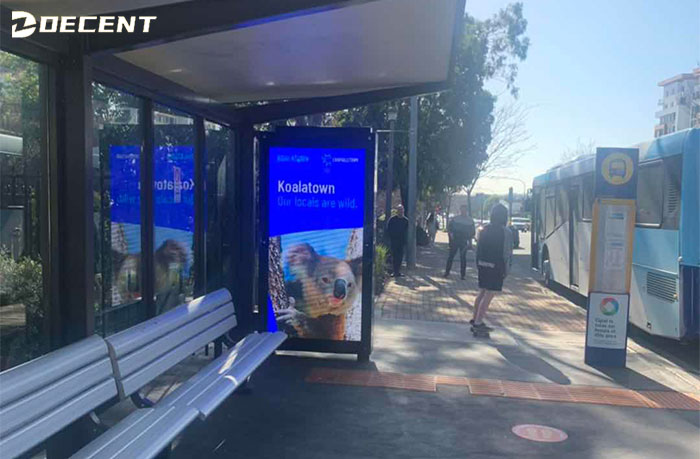
The fundamental principle of advertising is placing your message where the eyes are. Your LED Totem must intercept natural human movement.
High-Density Areas: Install totems in lobbies, main entrances, ticket lines, concession stand queues, and major hallway intersections. These are natural congregation points where people are forced to pause, giving them time to absorb the content on display.
Direction of Flow: Observe the primary directions people walk. The screen should be perpendicular to the flow of traffic, not parallel to it. A screen facing oncoming traffic has a much higher chance of being seen head-on.
Dwell Zones: Identify areas where people naturally stop and wait—e.g., elevator banks, seating areas in airports or malls, and registration desks. An LED Totem in a dwell zone guarantees a captive audience.
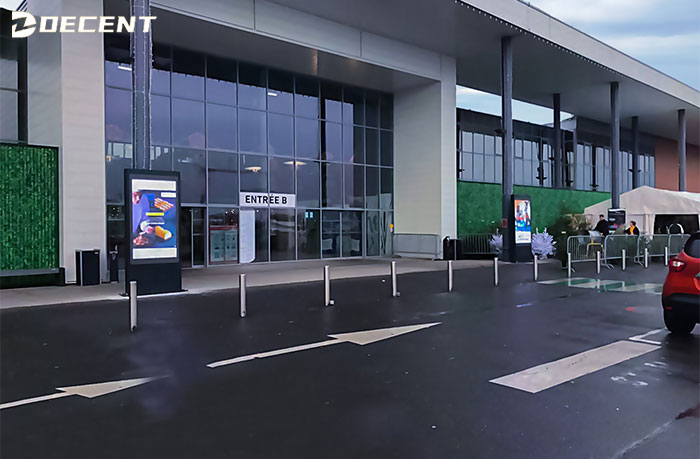
A clear, unobstructed view is non-negotiable. Even the best position can be ruined by poor sightline planning.
Eye-Level Placement: While vertical totems are naturally eye-catching, the crucial content should be displayed within an average person’s sightline. Avoid placing the key message so high that it requires viewers to crane their necks.
360-Degree Visibility: If your LED Totem is designed for viewing from all angles, ensure it is placed in the center of a space, not pushed against a wall or column. This maximizes its exposure to traffic coming from any direction.
Check for Obstacles: Before finalizing the position, survey the site from multiple vantage points. Ensure that structural columns, decorative features, furniture, or other signage do not block the view for a significant portion of the audience.

The environment plays a crucial role in the readability and effectiveness of your display.
Direct Sunlight: Avoid placing the screen directly opposite large windows or glass doors where intense, direct sunlight can cause glare and wash out the image. If unavoidable, invest in a high-brightness LED Totem (typically 5,000 nits or higher for sunlit areas) to combat this effect.
Indoor Lighting: Be mindful of bright indoor lights reflecting directly on the screen surface. Angling the totem slightly can often mitigate reflection issues from fixed ceiling lights.
Environmental Protection: For outdoor installations, ensure the totem is rated for outdoor use (IP65 rating or higher) and positioned to minimize exposure to direct, driving rain or snow if possible.
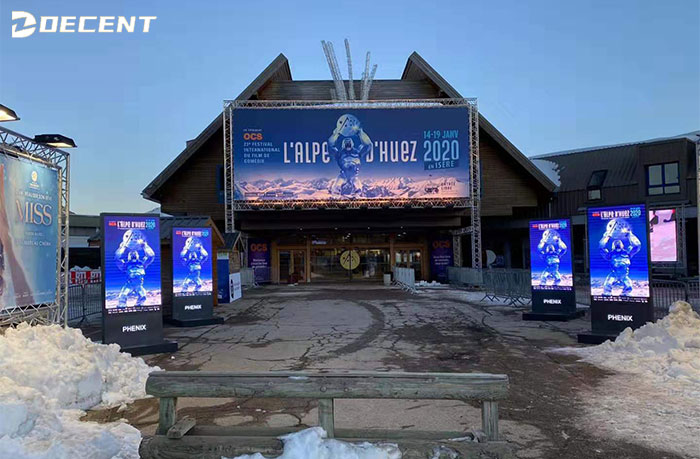
The “why” behind your LED Totem should influence the “where.”
Informational vs. Promotional: Is the totem providing wayfinding/directional information or advertising a product?
Informational: Place it at decision points (e.g., near escalators pointing to different wings of a mall, outside conference rooms).
Promotional: Place it near the point of sale. An ad for popcorn is most effective on a totem directly beside the concession stand, not halfway across the cinema lobby.
Target Audience: Consider who you are trying to reach. A totem advertising luxury goods should be placed in high-end retail areas, while one promoting event schedules should be near the main entrance.
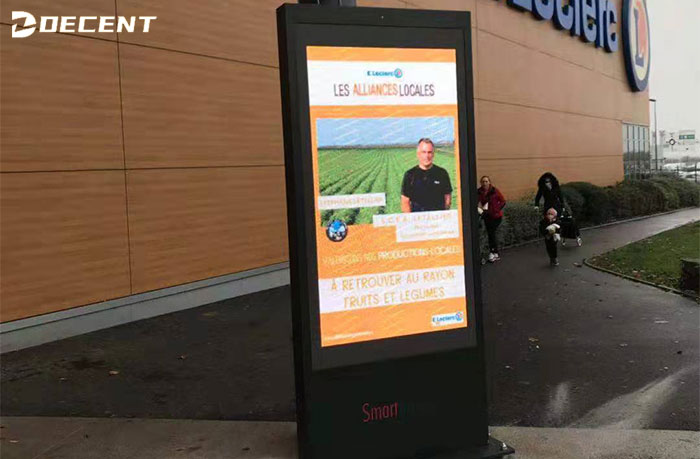
A perfect strategic location is useless if it’s not feasible.
Power Source: The location must have reliable access to a power source. If not, the cost of running conduit and electrical lines can significantly impact the project budget.
Safety and Compliance: The installation must not obstruct fire exits, emergency equipment, or ADA-required pathways. Always comply with local building codes and regulations.
Floor Surface: The floor must be structurally sound to support the weight of the totem and its foundation. Consult with a structural engineer for heavy units or installations on elevated floors.
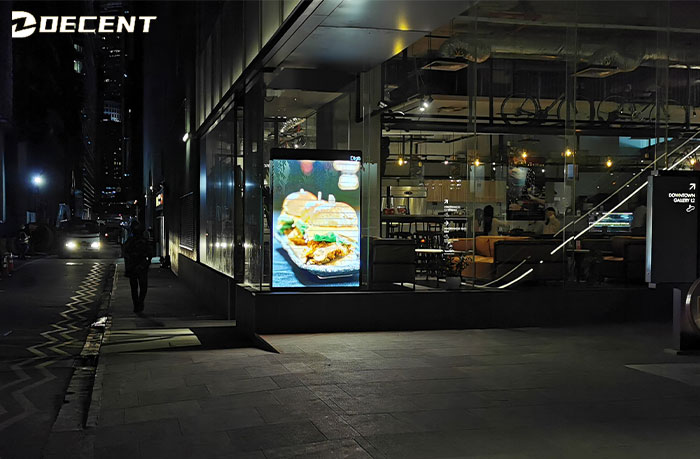
Selecting the right installation position for an LED Totem is a strategic process that blends art and science. It requires careful observation of human behavior, a thorough analysis of the physical environment, and a clear understanding of your communication goals.
By prioritizing high foot traffic areas, ensuring clear sightlines, managing ambient light, and aligning the position with your content’s purpose, you can transform your LED Totem from a simple digital screen into a powerhouse of engagement and information. A well-placed totem doesn’t just display content; it commands attention and drives action.
contact us
Stay up-to-date with our new product releases and latest news articles. DECENT Technology is a leading global supplier of LED display screens, providing customers worldwide with comprehensive solutions for the research and development, manufacturing, engineering installation, and after-sales service of high-end LED display equipment and display control systems. At present, it has developed into a national high-tech enterprise with over 1300 employees and more than 400 authorized national patents. The company has successively obtained safety production license, steel structure construction qualification, system integration qualification, third level professional contracting for building mechanical and electrical installation engineering, and second level professional contracting for electronic and intelligent engineering.
DECENT Technology is positioned as "core technology oriented" and has deeply cultivated and worked in the LED industry. It has established numerous marketing centers, offices, and after-sales service outlets worldwide. The company's products are distributed in more than 200 countries and regions, and has accumulated over 40000 classic cases. The strong comprehensive strength has made DECENT Technology the preferred brand among the Fortune Global 500 companies such as Sinopec, PetroChina, Tencent, Alibaba, Huawei, and Abbott.
Since its establishment, DECENT Technology has accumulated 10 industry-leading technologies and 43 innovative "black technology" technologies; And we have developed six product lines, including professional display, universal display, conference display, commercial display, outdoor led display, and rental display, which are applied in multiple scenarios such as command and monitoring, commercial display retail, broadcasting and broadcasting, outdoor advertising, sports events, and stage performances. The product quality maintains a leading position in the industry.
In the future, DECENT Technology will continue to adhere to the business philosophy of "product+service" and the corporate values of "innovation, sunshine, struggle, and gratitude", continuously moving towards higher technology, better services, and harder quality, committed to providing professional LED display system solutions for every customer.
DECENT Technology is a leading global supplier of LED display screens, providing customers worldwide with comprehensive solutions for the research and development, manufacturing, engineering installation, and after-sales service of high-end LED display equipment and display control systems. At present, it has developed into a national high-tech enterprise with over 1300 employees and more than 400 authorized national patents. The company has successively obtained safety production license, steel structure construction qualification, system integration qualification, third level professional contracting for building mechanical and electrical installation engineering, and second level professional contracting for electronic and intelligent engineering.
DECENT Technology is positioned as "core technology oriented" and has deeply cultivated and worked in the LED industry. It has established numerous marketing centers, offices, and after-sales service outlets worldwide. The company's products are distributed in more than 200 countries and regions, and has accumulated over 40000 classic cases. The strong comprehensive strength has made DECENT Technology the preferred brand among the Fortune Global 500 companies such as Sinopec, PetroChina, Tencent, Alibaba, Huawei, and Abbott.
Since its establishment, DECENT Technology has accumulated 10 industry-leading technologies and 43 innovative "black technology" technologies; And we have developed six product lines, including professional display, universal display, conference display, commercial display, outdoor led display, and rental display, which are applied in multiple scenarios such as command and monitoring, commercial display retail, broadcasting and broadcasting, outdoor advertising, sports events, and stage performances. The product quality maintains a leading position in the industry.
In the future, DECENT Technology will continue to adhere to the business philosophy of "product+service" and the corporate values of "innovation, sunshine, struggle, and gratitude", continuously moving towards higher technology, better services, and harder quality, committed to providing professional LED display system solutions for every customer. Do you have any questions or requests?
Click below, we are happy to provide assistance. contact us